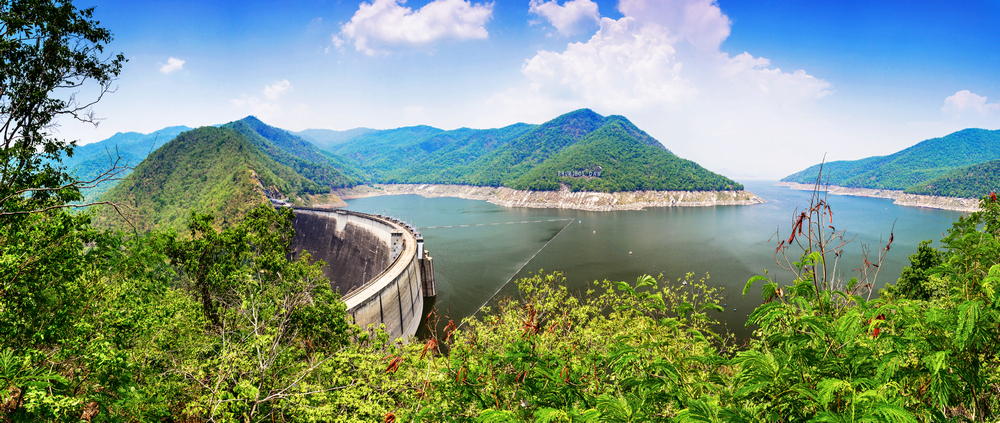
On 10 March 2020, the UN Secretary-General Mr. Antonio Guterres launched the World Meteorological Organization (WMO) State of the Climate 2019. The Report confirms that 2019 was the second-warmest year on record, and 2010 to 2019 was the warmest decade on record. Climate change clearly continues, and its impacts are more and more visible in many ways. Extreme weather struck every corner of the globe in 2019, while Asia-Pacific continues to bear the brunt of major impacts.
The year 2020 began with the Australian bushfires, where over 18 million hectares were burned. In addition to human fatalities, they destroyed vast tracts of the continent’s ecosystem. The top 10 most devastating disasters that Asia-Pacific experienced in 2019 were all climate and weather-related. The deadliest natural disaster of 2019 was the monsoon flooding in India, which killed an estimated 1,900 people. The most expensive disasters of the year, with $15 billion in damages were the Typhoon Hagibis in Japan and summer monsoon floods in China.
Is this linked with climate change?
This is a question that everyone asks.
Extreme event attribution, one of the most rapidly expanding areas of climate science, sheds light on the influence of climate change to specific types of disasters. The US National Academies of Sciences (NAS) analyzed comprehensively the event attribution science in diverse contexts of the extreme events. The extreme events related to an aspect of temperatures, such as heat and cold waves, were found to have the highest level of confidence, followed by hydrological drought and heavy precipitation. The lowest confidence for attribution was found in the case of severe convective storms and extratropical cyclones. These findings are consistent with what scientists have reported in recent years and have also warned will happen as the planet warms.
Drawing on the science of event attribution, it’s clearer that the widespread heat waves that Asia-Pacific experienced in 2019 are most probably linked with climate change, followed by droughts, floods and tropical cyclones. ESCAP’s Asia-Pacific Disaster Report 2019 shows the region’s disaster ‘riskscape’ with $675 billion in annualized average losses. It highlights that climate-related disasters occupy 85 per cent of this ‘riskscape’. The region’s 2019 disasters signal a riskier future of the Asia-Pacific – the world’s most disaster-impacted region as the planet warms.
Adapting to climate change is a necessity
Weather extremes have become the “new normal” in 2019, with countries of Asia-Pacific often lacking capacities to deal with these events propelled by climate change. Regardless of the progress made in mitigation efforts by the global community over the coming decades, climate change is already occurring. Adapting to climate change is therefore essential.
The Global Commission on Adaptation Report 2019 highlights that investing $1.8 trillion globally in five areas from 2020 to 2030 could generate $7.1 trillion in total net benefits. The five areas include early warning systems, climate-resilient infrastructure, improved dryland agriculture crop production, global mangrove protection, and investments in making water resources more resilient. In particular, the rate of return on investments in strengthening early warning systems has a 10:1 benefit-cost ratio.
Climate Action Summit: Resilience and adaptation attracts political commitments
The Climate Action Summit emphasizes that climate risks cannot be ignored and must be integrated very early on in decision-making systems, long-term planning and into investment decision-making and business planning. At the Summit, more than 110 countries and 85 international organizations and private sector entities committed to “enhanced” action on resilience and adaptation. On accelerating climate change adaptation, two major initiatives were launched at the Summit – (i) the Resilience and Adaptation Call for Action by the United Kingdom (UK), Egypt and supported by UNDP, and (ii) the Coalition for Disaster-Resilient Infrastructure (CDRI) led by India in partnership with UNDRR.
COP26 Glasgow: Spotlight on adaptation and resilience
The first priority for the UK’s COP26 Presidency in partnership with Italy in November 2020 is to take forward the Resilience and Adaptation Call for Action initiative with concrete steps to translate the political commitments into on-the-ground action. The Call for Action sets out commitments to: (i) act now to respond to immediate climate impacts and to support the most vulnerable members of society, (ii) build resilient futures by putting climate risk at the center of decision making, and (iii) urgently increase the availability of adaptation and resilience finance.
The UK COP26 Presidency attaches priority to science-based solutions and targets to enhance the resilience of the most vulnerable population. Asia Regional Resilience to a Changing Climate (ARRCC), a UK-funded programme, for example, supports the delivery of contextual climate services for early warning systems to reduce casualties; medium and long-term sectoral planning to reduce economic losses and build livelihood resilience; and weather-indexed insurance to transfer the financial impact of disasters. ESCAP is partnering with the ARRCC initiative to capitalize on ongoing innovations in climate sciences to strengthen the adaptation and resilience capacities of the most vulnerable countries of the region.
The success of COP26 Glasgow will be an important milestone to accelerate the climate actions and particularly, the adaptation and resilience in Asia and the Pacific.